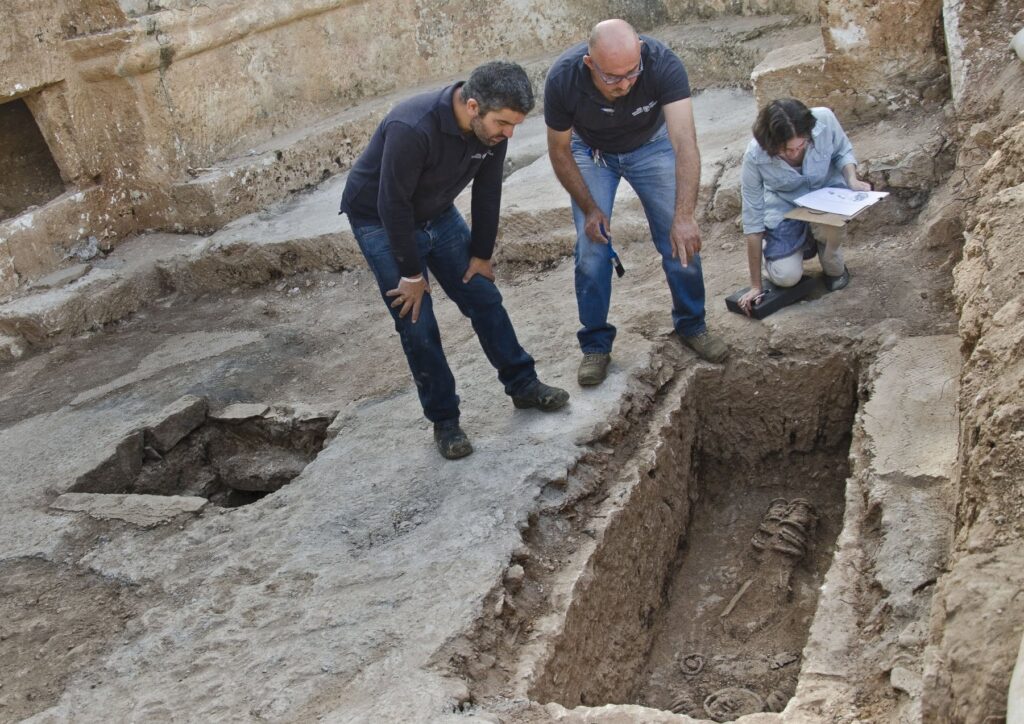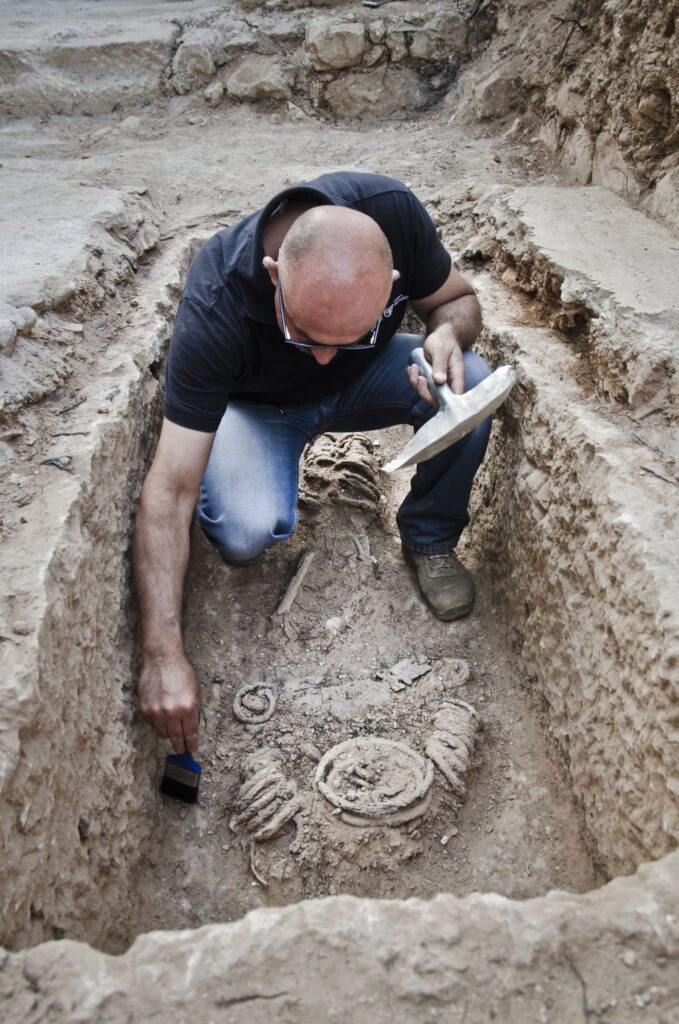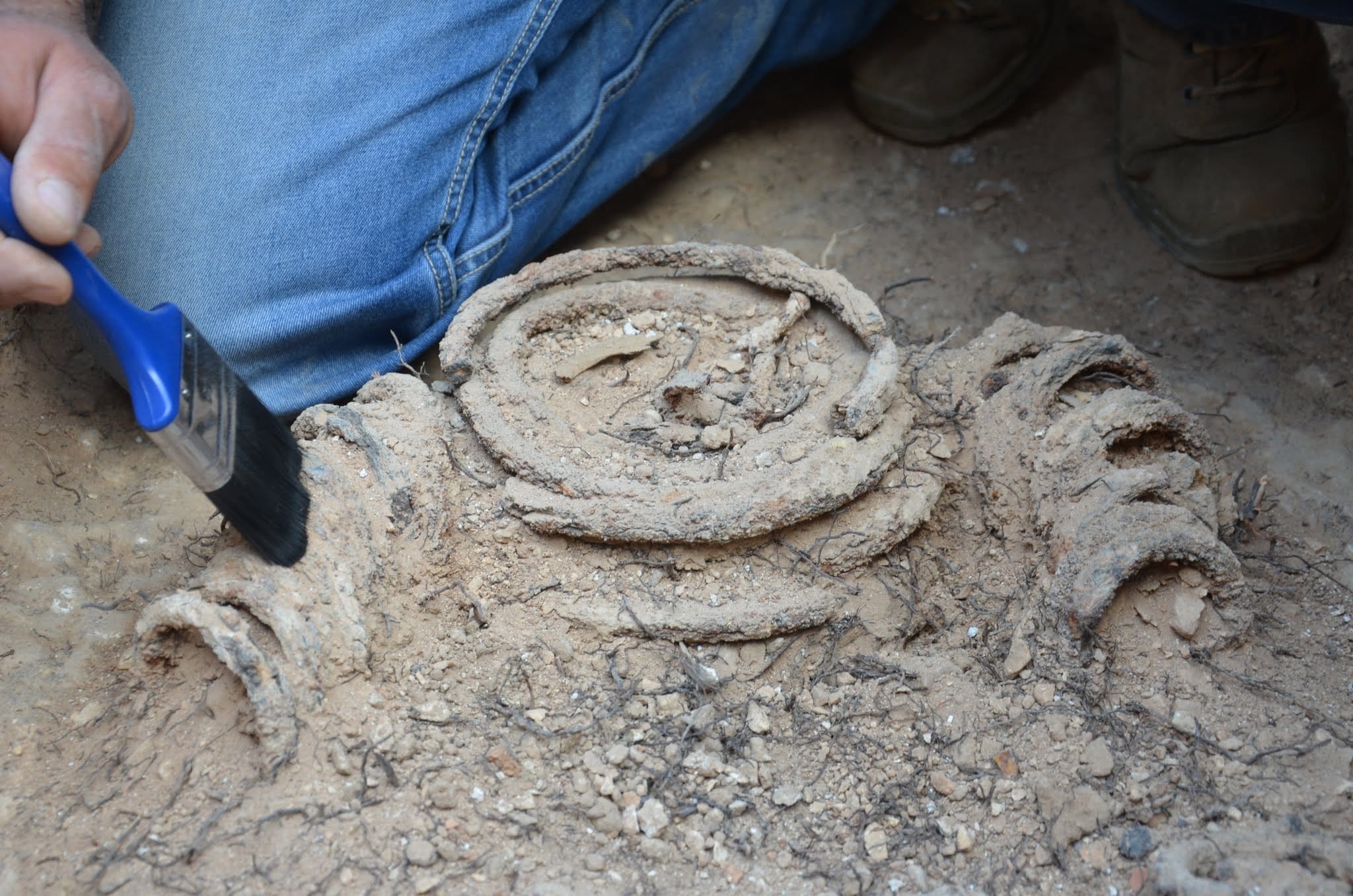Researchers have uncovered the world’s first archaeological evidence of extreme asceticism practiced by nuns in ancient Jerusalem. The groundbreaking discovery came when scientists from the Israel Antiquities Authority and the Weizmann Institute of Science analyzed the remains of a skeleton found wrapped in heavy chains in a Byzantine monastery.

The exposed nun is wrapped with chains (Image courtesy Israel Antiquities Authority)
Using innovative proteome analysis technology, researchers examined proteins in tooth enamel to determine that the skeleton belonged to a woman. The analysis detected variations of Amelogenin proteins, which are encoded by sex chromosomes, confirming the skeleton was female.
“This is the first time physical evidence was ever found of a phenomenon known until now only from historical writings,” the researchers noted in their report.
The skeleton was discovered in a single grave beneath a church altar, suggesting the woman was honored by her community. The remains were bound with an extensive array of iron rings: 12-14 rings around the arms or hands, four rings around the neck, and at least 10 rings around the legs. Iron plates attached to the rings on her stomach created an armored appearance.

Excavation Directors Zubair ʼAdawi and Kfir Arbiv examine the rare find
According to excavation directors Zubair ʼAdawi and Kfir Arbiv of the Israel Antiquities Authority, “The nun is an expression of a phenomenon that was widespread among Byzantine monks in antiquity, which was accompanied by excessive extremism.”
The site, located approximately three kilometers northwest of Jerusalem’s Old City, has been identified as a Byzantine monastery that operated between the 5th and 7th centuries CE. The excavation revealed burial crypts containing remains of women, men, and children beneath the church altar.

Zubair ʼAdawi, Excavation Director on behalf of the Israel Antiquities Authority, uncovers the find
Contrary to modern assumptions, carrying heavy iron rings was not a form of punishment but rather a voluntary practice of self-flagellation. Byzantine religious beliefs held that bodily suffering elevated the soul to greater spiritual heights.
Historical records document various forms of self-imposed suffering among monks, including prolonged fasting, binding the body with chains, isolating themselves in caves or cells, exposing themselves to the elements, and even living atop pillars or in trees.

The process of archaeological documentation
While such extreme asceticism has been primarily associated with male monks, historical texts do mention women who engaged in similar practices. Theodoret of Cyrrhus, in his 5th century CE work “Historia Religiosa,” describes two women, Marana and Cyra, who bound themselves with chains around their limbs, neck, and waist for 42 years.
Dr. Amit Re’em, Jerusalem District Archaeologist for the Israel Antiquities Authority, noted the significance of this discovery in understanding women’s religious roles: “Ascetic nuns represent a fascinating phenomenon worth dwelling on, especially against the background of International Women’s Day. These literally extra-ordinary women lived and functioned in a rigid male and patriarchal environment, which inhibited their activities.”
Historical accounts tell of women who disguised themselves as men to participate in religious life, such as Saint Pelagia, a former actress who lived as a hermit named “Pelagios” on the Mount of Olives, and Saint Marina, who adopted the name “Marinus” to join her father in a monastery.

Kfir Arbiv of the Israel Antiquities Authority, uncovers a mosaic floor at the site
The “Nun of the Rings,” as researchers have dubbed the skeleton, may have come to Jerusalem from Syria after learning about ascetic practices, or she could have been a local woman who adopted the custom. This discovery follows the earlier finding of a “Monk of the Chains” discovered decades ago near the Mar Elias monastery on the road from Jerusalem to Bethlehem.
Eli Escusido, Director of the Israel Antiquities Authority, concluded: “We have here a fascinating discovery, which will require continued research by our researchers at the Israel Antiquities Authority, in order to better understand the role of women in religious life and nunhood in that historical period.”




